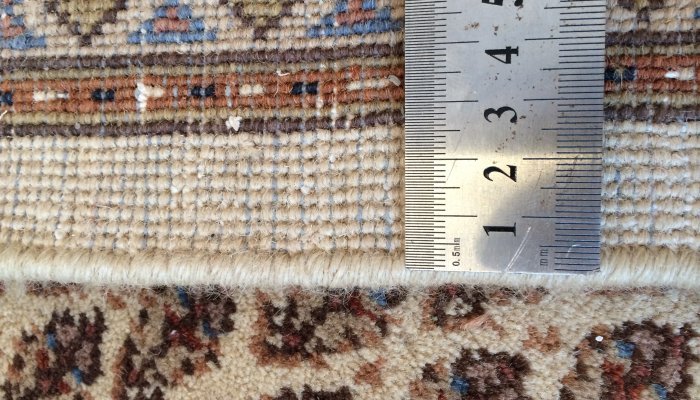Zimbabwe-born Oscar Khulekani Ndlovu has observed the rug trade for 14 years. He started and owns “Simply Rugs” – a small business operating in the affluent suburbs of Johannesburg. He has the spotless kind of reputation necessary for matchmaking investment-worthy Persian rugs to people who want to understand what they’re buying, for how much, and why.
You aren’t the typical Persian rug dealer, Oscar… why rugs?
I used to be a car wash guard at a business in Benmore. A man named Hossein ran a small Persian Rug repair shop there. I often helped him carry carpets that arrived while I washed cars. I asked him to look for a job for me. In 2001, when I was 19 he found me a job at a Persian carpet warehouse called Kashan Imports/Exports - a private supplier to the Hyde Park area. They received containers from Iran, Pakistan, India, Tibet, Turkey and Afganistan. I was there when they opened the bales and saw and learnt to identified the rugs, first. By name and design. For example, a Kashan rug comes from Iran and is named after the Kashan village tribe. And rugs from cities like Tabriz take the city’s name.
Which rugs fit into the category “Persian” & why?
The original Persian rugs came from towns and cities in Iran. They were so popular that other countries like India and Pakistan copied them - also adopting the name of the Iranian city each design originally came from.
Today, the word “Persian” is associated with hand-knotted quality and applies only to those Oriental rugs made in Iran (formerly Persia). But it’s often associated with copies, too. A true Persian has an unusually thick pile (up to 160 knots per square inch), extremely rich colour combinations and unique designs. Persians use 100% wool (sometimes 100% silk or wool/silk) and age well. Compared to say rugs (many from India) which wear and the colour runs after cleaning. Or with twisted knots and that cause uneven pile. Knock offs are common, but genuine Persians are very different.
Which types of each are worth investing in and what should I expect to pay?
R30 000 for a Kasim silk rug from India. A Qum silk rug from Iran has a 100% silk base and pile. They’re rare, superb investments but you’ll pay R60 000 for a 1.5m by 1m rug up to R100 000-plus. A single one can take a person (often an elderly granny) up to two years to make.
A ‘Nain-6la’ (“la” in Farsi means “layer”) from India is good. It combines wool with a silk base. They come only in white and blue sometimes with a little red. Miri designs from India are great but hard to come by.
What will R10 000 buy?
Nothing worth investing in. An investment-quality rug include is signed and/or comes with a certificate of authenticity. To properly identify a rug you need to find someone fluent in Farsi to translate the signature.
Have rug prices gone up much over the years?
Yes. Even more lately. In 2014, a Mori Bokhara rug from Pakistan averaged around R800 per m2. Now it costs R1100 p/m2 due to currency fluctuation.
Most important factors?
Find out what’s it made from and where it was made. Do your research. Hunt down those from Iran, especially from Qum, Tabriz, and Isfahan. Or find a Kashan Silk rug at a competitive price. Isfahan rugs are preferable if they are silk as some of the wool ones dyed with vegetable dye are sensitive and need an expert to clean. Someone who doesn’t know what they’re doing can cause colour to run.
Common mistakes?
Buying cheaper versions mistaken for being the same thing. “Saving” money on a rug is always a mistake. Two may “look” the same but aren’t.







